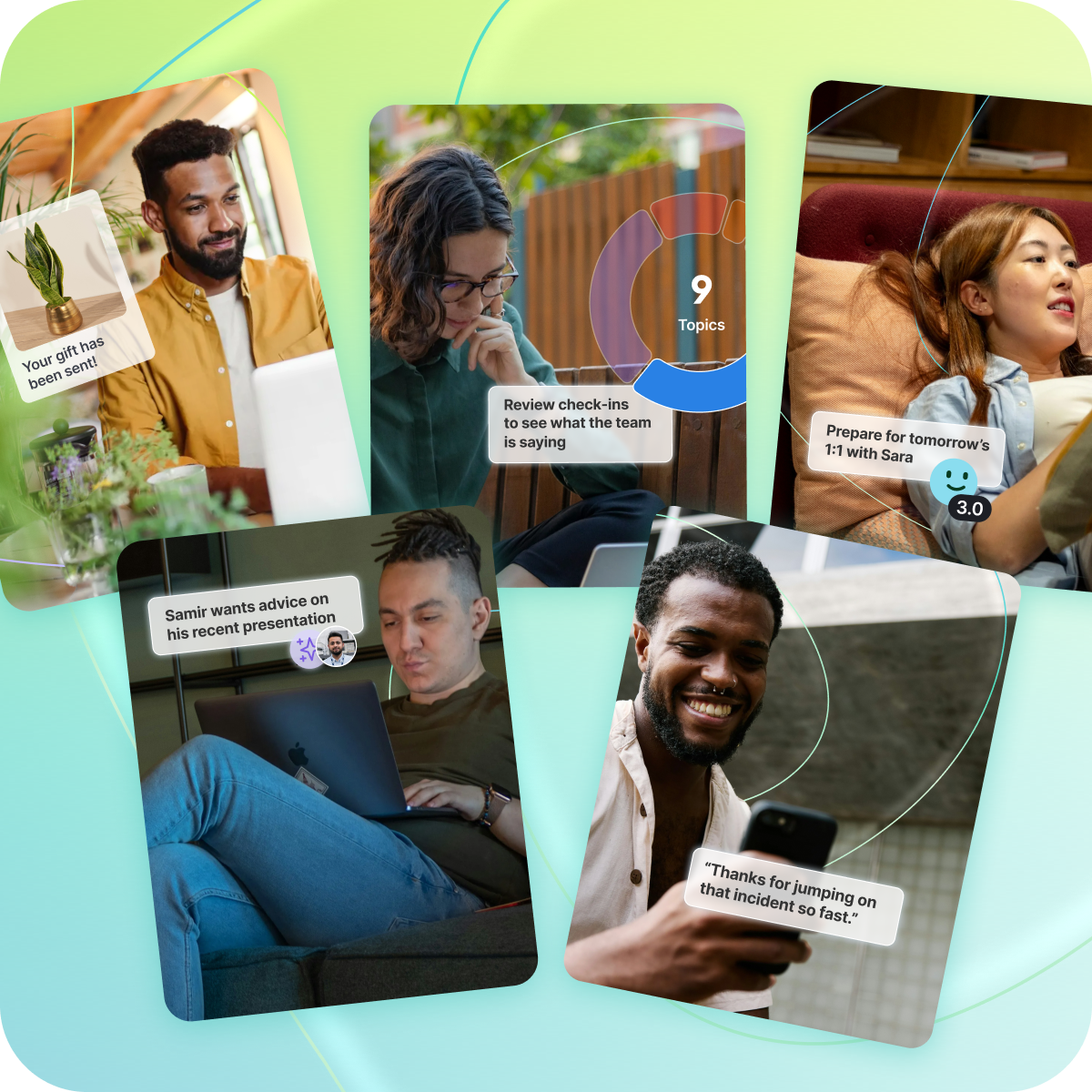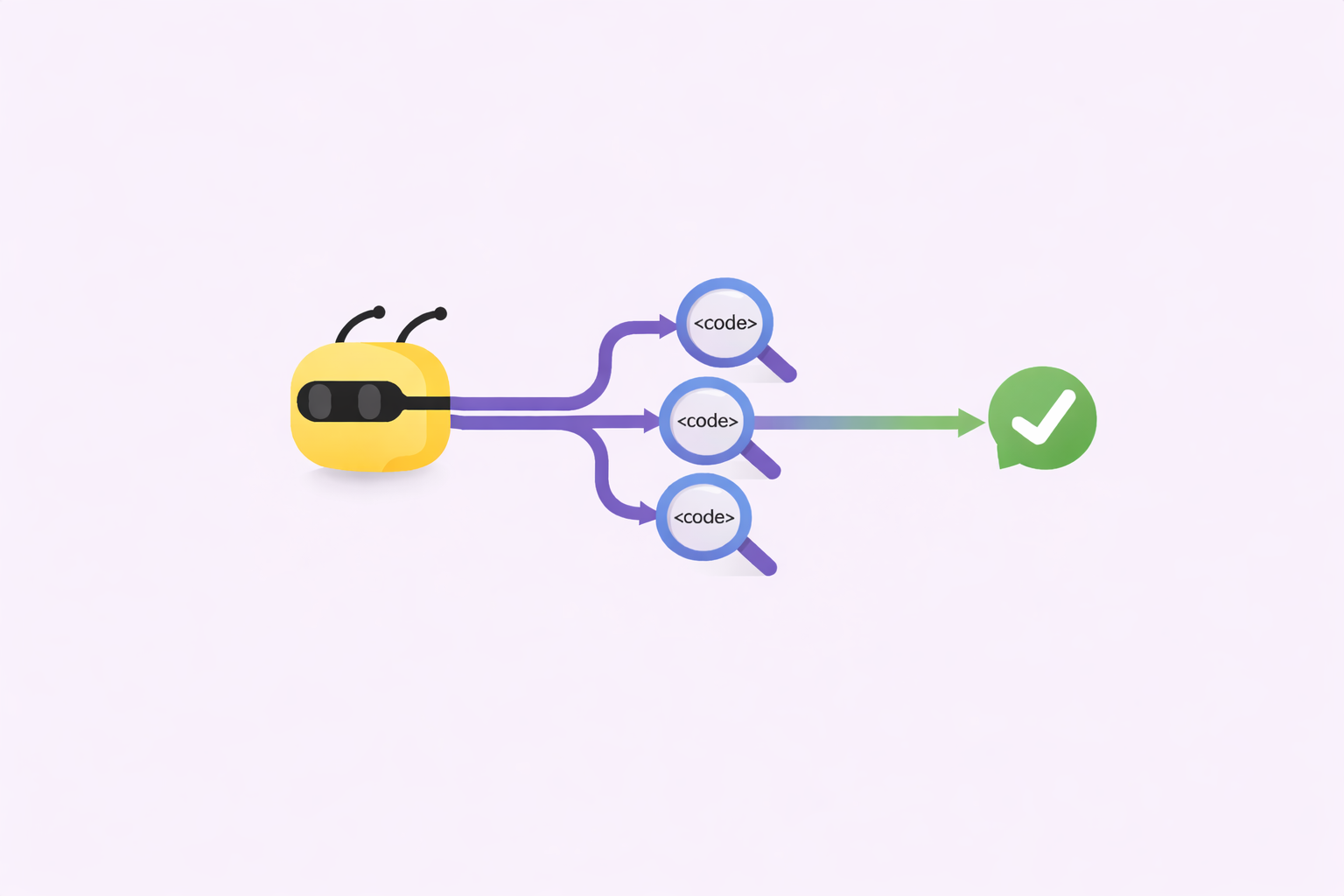How to Maximize the ROI of Employee Recognition

The data is clear: employee recognition has a significant and substantial ROI. But that clarity comes with a caveat—you’ll only see that return on recognition if you do it right. And that’s harder than it sounds.
Simply bumping up how often you toss a “good job!” into a conversation with employees isn’t enough to create an authentic culture of recognition. Those conversations are forgettable, while effective recognition is memorable and thoughtful. And without those essential components, you’ll find your return on your investment in a recognition program doesn’t measure up to your hopes.
There are data-backed ways to maximize the ROI of employee recognition. In this guide, we’ll cover all the best practices you need to know for giving effective recognition and choosing the right recognition platform. When you know what makes recognition resonate with employees most deeply, your whole organization will be better equipped to offer meaningful and authentic recognition consistently.

Best practices for giving recognition
How can you recognize employees in the most effective way possible? It’s both an art and a science to do recognition well, and it includes these essential components and best practices.
Timely
Effective recognition happens in the moment or shortly after; keeping it timely means employees don’t think their hard work was ignored or forgotten. It’s more meaningful to receive recognition when the feeling of accomplishment is still fresh.
Timely recognition can look like giving specific in-the-moment feedback, like telling an employee, “great job on the presentation you just gave—your clear examples really drove home the message.” For larger projects, giving recognition via shoutouts on your internal social media, awards, or a private thanks should come as soon as possible after the project is completed.
Frequent
Recognition also needs to be frequent to make the greatest impact. Employees who do not feel adequately recognized are 2x likely to quit versus someone who is regularly recognized. On the flip side, employees who are consistently recognized are more innovative and creative, and more willing to go above and beyond the basic expectations of their role.
Gallup says weekly recognition, at a minimum, is best. That doesn’t necessarily mean big awards or huge shout-outs; small moments of recognition for a job well done should be happening consistently to reap all the rewards of a good recognition program.
Specific
Giving someone a smile and saying, “good work—keep it up!” is, technically, recognition, and it can feel positive. But the most memorable and motivating recognition comes with very specific and clear praise.
“Great job on that project—I loved how you clearly communicated deadlines and held everyone accountable; it ensured we launched this critical initiative on time” is a whole lot more likely to encourage the receiver to repeat those behaviors again.
Plus, being specific shows employees you’re not simply checking a box on a checklist to increase the sheer volume of recognition. Specific recognition feels more authentic because it shows you were paying attention, and recognition that feels authentic is powerful.
Visible
Recognition isn’t only about thanking someone for a job well done (although that’s important!). It’s also about showing your whole organization what great work looks like, and how it gets noticed and rewarded.
Ensuring recognition is visible can mean sharing wins and shoutouts on your internal social media, or even external platforms when it’s relevant. It can mean acknowledging wins in town halls or all hands meetings, or in a small team meeting. Or it can mean sharing however your organization finds effective, and how your recognized employee prefers (not everyone loves public kudos).
Do find a way to share recognition more broadly, more of the time, to gain more ROI. One act of recognition, when shared widely, can reap you the rewards of 10 or more similar but invisible acts.
Inclusive
Inclusivity is another essential part of an effective recognition program. If you’re mostly recognizing the same group of people or the same narrow set of accomplishments over and over again, it can actually be discouraging to employees who don’t fit into those groups.
And many employees don’t feel that recognition is inclusive or equal at their organization. Gallup research has found that only 26% of employees strongly agree they receive similar amounts of recognition as their team members who perform similarly.
When determining how to make your recognition program more inclusive, try looking beyond your typical metrics for recognition. Are large, flashy projects getting all the awards while critical behind-the-scenes work is overlooked? Try encouraging managers to highlight a broader range of wins and hard work. And regularly review your recognition program to ensure it’s not always the same people getting the same awards.
Values-based
Finally, your recognition program needs to be clearly based on your company’s values to gain the most ROI. That’s because you want to align the work that you recognize with what your organization values, not merely financial results or external praise.
Too many companies overlook this important part of recognition. In fact, 52% of employees don’t feel their recognition program is aligned to their organization’s values. This can make your recognition program seem inauthentic—if you say your company values collaboration and teamwork but reward teams that are excessively competitive because they have higher profits, that’s a serious mismatch.
When designing your recognition program, be sure that your company values are centered, not an afterthought. And regularly check in to see if what you espouse as your corporate values are truly being celebrated in your recognition program, or if you need to reevaluate.
Want to see all six of these best practices in action? Here are real-world recognition examples for each one!

Best practices for a recognition platform
The best practices above will help you develop the best recognition program to get you maximum ROI. But that’s only part of the puzzle. You also need to choose the right recognition platform to get that ROI as well. Here’s what you should look for when shopping for a recognition platform.
Allows for personalization
Recognition is highly personal! Not everyone likes to be recognized in the same way. Some people get a huge thrill from being publicly acknowledged in a company-wide all-hands, while that’s another person’s nightmare because they’d prefer private praise in a one-on-one meeting. And lots of people fall in between those two sides of the spectrum, too.
That’s why recognition technology that can understand and personalize recognition automatically depending on the recipient is so critical. It makes that recognition more meaningful to each employee, no matter how they prefer to receive it.
Incorporates automation
One of the reasons you might not be getting the maximum ROI from your recognition program is because thoughtful recognition takes time, and your managers and employees are busy. But the right recognition platform can take a lot of that work off your plate with automation.
By automating recognition actions like celebrating anniversaries and birthdays, rewarding employees for referrals or completing trainings, and fulfilling gift cards and donations, your managers and team members can save valuable time. Plus, it means those important events won’t be forgotten even during your busy season.
Is habit-forming for users
Even the greatest recognition platform won’t get you much ROI if your users abandon it soon after launch. That’s why choosing a platform that makes recognition a habit is essential.
Recognition technology can ping employees when they need a prompt to give recognition so it’s timely. And over time, with these easy reminders, recognizing team members or colleagues becomes a habit. Integrating recognition into an employee’s daily workflow makes it seamless and simple, and that reduced friction means more consistent recognition.
The takeaway
That is how you truly build a culture of recognition, and deliver the maximum ROI for your recognition program. Want to explore a recognition platform that enables effective recognition across your entire organization? Try Bonusly for free today, or see why Bonusly customer Rechat says: “If you're looking to achieve an exceptional ROI out of a total rewards platform, Bonusly is a must have.”







